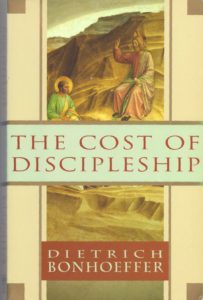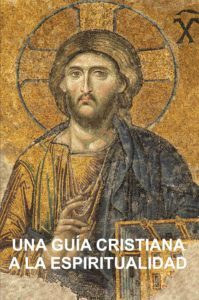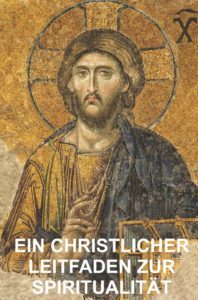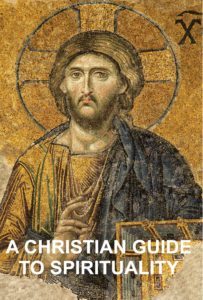Stephen W. Hiemstra's Blog, page 135
January 1, 2021
Allmächtiger Schöpfer
Von Stephen W. Hiemstra
Ich glaube an Gott, den Vater, den Allmächtigen, den Schöpfer des Himmels und der Erde Ω
Gottes Demut, die durch die Inkarnation in Jesus Christus zum Ausdruck kommt, beleuchtet seine Souveränität (Matt 21:5;2 Cor 12:10). Wirklich mächtige Menschen können furchtlos demütig sein—sie haben nichts zu beweisen und niemand wagt es, ihre Autorität in Frage zu stellen. Ihre inhärente Stärke und ihr Selbstvertrauen machen es einfach, für sie zu arbeiten. Im Gegensatz dazu konkurrieren die Manager der zweiten und dritten Stufe häufig um mehr Autorität und haben immer ihre Messer heraus. In Analogie dazu ist ein allmächtiger Gott großzügig und kann leicht angesprochen werden. Warum sollten wir anders sein?
Als König David schriebe—“Die Himmel erzählen die Ehre Gottes, und die Feste verkündigt seiner Hände Werk.” (Ps. 19:2 L17), hatte er nicht nur die Schönheit der Schöpfer im Sinn. Die Ordnung des Universums weist auf die Herrlichkeit und Souveränität Gottes hin. Überall, wo Wissenschaftler studiert haben, gelten die gleichen Gesetze der Physik. Warum sollte es nur einen Satz physikalischer Gesetze geben?
Wie David andeutet, zeugen die Ordnung und Stabilität des geschaffenen Universums von Gottes Existenz und Souveränität. Kurt Gödel, ein tschechischer Mathematiker, der 1906 geboren, in Wien ausgebildet und an der Princeton University unterrichtet wurde, ist berühmt für seinen 1931 veröffentlichten Unvollständigkeitssatz. Dieser Satz besagt, da
December 31, 2020
Top 10 Posts on T2Pneuma in 2020

By Stephen W. Hiemstra
Happy New Year!
Most of us will never forget 2020 but we are all happy to give it a try.
In this post, I review the most popular posts during the year. Surprisingly, eight of the ten were also in the top ten list for 2019. While in 2019, four of the top ten posts were posts in Spanish, this year five of the top ten were Spanish posts. None of the top ten posts were written in 2020, although one was republished in 2020. This suggests that search engines played a key role in these statistics.
Top Ten Poss on T2Pneuma.net in 2020
Title
2020
2019
Type
Year written
Stone and Duke Encourage Theological Reflection
309
247
Review
2016
Prayer Against Dark Shadows
276
92
Prayer
2018
Juan 17: La Oración de Intercesión
259
174
Bible study
2013
Friedman: Families Matter
217
192
Review
2013/20
2 Corintios 9: El Don Espiritual de la Generosidad
191
259
Bible study
2014
1 Corintios 12: Los Dones Espirituales Apuntan al Espíritu Santo
163
89
Bible study
2014
Gálatas 2: Judios y Gentiles
160
178
Bible study
2014
Nouwen Describes Leadership Challenges
157
Review
2017
Nouwen: Make Space for Self, Others, and God
153
126
Review
2016
Descanso en Dios, Salmo 23:2
128
Sermon
2013
Source: website statistics, 12/18/2020
Top Ten Posts on T2Pneuma in 2020
Also see:
Top Ten Posts on T2Pneuma.net in 2019
Prayer for Healthy Limits
Other ways to engage online:
Author site: http://www.StephenWHiemstra.net
Publisher site: http://www.T2Pneuma.com
Newsletter: https://bit.ly/Dec_2020
The post Top 10 Posts on T2Pneuma in 2020 appeared first on T2Pneuma.net.
December 29, 2020
Bonhoeffer: Follow After Christ
 Dietrich Bonhoeffer. 1995. The Cost of Discipleship (Orig Pub 1937). Translated by R. H. Fuller and Irmgard Booth. New York: Simon & Schuster—A Touchstone Book [1].
Dietrich Bonhoeffer. 1995. The Cost of Discipleship (Orig Pub 1937). Translated by R. H. Fuller and Irmgard Booth. New York: Simon & Schuster—A Touchstone Book [1].
Review by Stephen W. Hiemstra
Who do you follow after?
Belief follows obedience (57). Dietrich Bonhoeffer’s The Cost of Discipleship was the first book of theology (other than the Bible) that I remember reading as a young person . It was a tough read in eleventh grade, but I remember one thing: grace is not cheap.
Introduction
Bonhoeffer wrote:
Cheap grace is the preaching of forgiveness without requiring repentance, baptism without church discipline, Communion without confession, absolution without personal confession. Cheap grace is grace without discipleship, grace without the cross, grace without Jesus Christ, living, and incarnate (44-45).
The Apostle Paul put it this way: we were bought with a price (1 Corinthians 6:19-20). The title in German is Nachfolge which means follow after. It is often translated simply as disciple.
Historical Context
Americans are mostly unaware that Adolf Hitler became the democratically elected chancellor of Germany on January 30, 1933 (Metaxas 2012, 138). It was later that he seized the title of Führer, which means leader in German. Bonhoeffer distinguished himself as an early opponent to National Socialism and spoke in a radio broadcast about the limits of leadership only two days after Hitler’s election. Bonhoeffer said: A good leader serves others and leads others to maturity (Metaxas 2012, 142).
Nachfolge was written in the years that followed (1933-1937) as a rebuttal to the false leadership embodied in the idea of führer. The disciple stands under God’s authority which the Führer denies. Still, Bonhoeffer was a leader in the Confessing Church. Nachfolge is quietly addressed to the Confessing Church (e.g. 53), which stood apart from Hitler’s Reichkirche (official German Church) [3], and is not addressed to society more generally. In standing in opposition to the führer principle, Bonhoeffer needed to define Christian leadership. He wrote: Discipleship means allegiance to the suffering Christ, and it is therefore not at all surprising that Christians should be called upon to suffer (91). Bonhoeffer was very aware that Jesus also lived during trying times and was also persecuted by corrupt religious leaders.
Organization
Although Nachfolge is often interpreted through the lens of cheap grace and discipleship, these topics consume less than a third of the book (5 of 32 chapters). Nachfolge reads like a commentary on the Gospel of Matthew. It divides into 4 parts:
Grace and Discipleship;
The Sermon on the Mount;
The Messengers; and
The Church of Jesus Christ and the Life of Discipleship (9-10).
The Touchstone edition includes a forward by Bishop G.K.A. Bell who knew Bonhoeffer personally and worked with him (in England) to coordinate the opposition to Adolf Hitler during the Second World War. It also includes a memoir by Gerhard Leibholz, a Jewish attorney who was also Bonhoeffer’s brother-in-law. Let me turn to summarize these 4 parts briefly.
Grace and Discipleship (35-101)
The problem posed by cheap grace arises because God offers grace to the sinner, not the sin. Cheap grace whitewashes sin and insults God’s mercy. Bonhoeffer wrote: Costly grace was turned in cheap grace without discipleship (50). This is to confess Christ as savior, but not as Lord. Worse, it inoculates the aspiring Christian against true faith (54). By contrast, the disciple is called by Christ (63) and adheres to Christ (59).
Bonhoeffer wrote that only those who obey can believe (70). In other words, for Bonhoeffer there is no such thing as a seeker Christian—we are called or not—and suffering is the badge of a true disciple (91). Suffering and rejection mark Christ as the true Messiah; the disciple shares in his master’s fate (87). Bonhoeffer famously wrote: When Christ calls a man, bids him come and die (89). We gain our identity as individuals through Christ’s call (94).
The Sermon on the Mount (103-197)
If Bonhoeffer had been an individual opposed to Adolf Hitler, then he could have ended his book with Part 1–Grace and Discipleship and escaped from Hitler’s Germany to spend the war working as a professor in the United States. In fact, in 1939 his escape was arranged for him in the United States where he spent 26 days mulling this alternative over. But Bonhoeffer was not an individualist; he could not cut and run. Instead, he returned to Germany to face his true calling (Metaxas 2012, 321-346). The remainder of the Nachfolge addresses the role of the disciple at work and in the community .
Bonhoeffer begins his analysis of the Beatitudes by laying out the participants: Jesus, the multitudes, and the disciples. Bonhoeffer wrote:
Yet there will be enmity between them right to the bitter end. All the wrath of God’s people against him [Jesus] and his Word will fall on his disciples; his rejection will be theirs (106).
Therefore, Jesus blesses his disciples (106) calling them salt and light. The problem of the church, our church, is the failure to be salt and light (118). The touchstone of the church, in Bonhoeffer’s words: simple surrender and obedience, not interpreting it or applying it, but doing and obeying it (197).
The Messengers (199-221)
Jesus’ disciples function as under-shepherds to Jesus, in part, because bad shepherds lord generally over the flock (202). In Matthew 9:36, Jesus cites:
So they were scattered, because there was no shepherd, and they became food for all the wild beasts. (Ezekiel 34:5 ESV)
The remainder of this chapter in Ezekiel focuses on the attributes of bad shepherds. In this context, the disciples function as evangelists who are charged to proclaim the kingdom of heaven and confirm their message by performing signs—miracles, exorcisms, and raising the dead (Matthew 10:7-8; 207). They are to depend on hospitality being accredited as disciples by their poverty (209) and by their suffering (215). As under-shepherds, they are also to expect opposition from the bad shepherds.
The Church of Jesus Christ and the Life of Discipleship (223-304).
As the called out ones of Christ (271), how do we understand our call? Bonhoeffer writes: There was no other way for them [the disciples] to know Christ, but by his plain word (226). Consequently, Bonhoeffer sees child baptism as an abuse of the sacrament because baptism cannot be repeated and no faith is present (235). More generally, the church becomes visible through the preaching of the Word, baptism, and communion (251). Radical transformation of the church takes place as we all stand equally before the radical call of Christ (256-258). Restoration of the divine image is impossible for us but becomes possible when God becomes like the image of man as He does in Jesus Christ (299).
Assessment
Bonhoeffer’s Nachfolge poses a challenging question to the church. How does the church be the church in the midst of obvious persecution? Before the Gestapo began hauling dissenting pastors off to concentration camps and drafted others into the Machtwehr (army), the Nazi worked to co-opt the church into a vision of the church cast by Nazi dogma and political needs. The Theological Declaration of Barmen 1934 (Die Barmer Theologische Erklärung) helped articulate the framework of the Confessing Church and met the most egregious Nazi efforts in forming the Reichskirche, but more was needed. In some sense, Nachfolge was Bonhoeffer’s efforts to explain to himself what God required of him.
Who do we follow after? We are to be imitators of God (Ephesians 5:1; 304).
Footnotes
[1] http://imprints.simonandschuster.biz/....
When I entered seminary, I read it again; now having graduated from seminary this is my third reading. This is the only book, other than the Bible, that I have ever read three times.
[3] http://en.wikipedia.org/wiki/Protesta....
The Sermon the Mount is found in both the Gospel of Luke (Luke 6:20-49) and the Gospel of Matthew (Matthew 5-7).
The remainder of Nachfolge is in some sense the beginning of a journey on the road to another book, Life Together, which chronicles Bonhoeffer’s work with an underground seminary in Hitler’s Germany. Life Together was completed in Göttingen, Germany (a university town where I also studied) in 1938 (Metaxas 2012, 312).
This chapter focuses on Matthew 9:35-10:42 (199).
References
Metaxas, Eric. 2010. Bonhoeffer: Pastor, Martyr, Prophet, Spy—A Righteous Gentile versus the Third Reich. Nashville: Thomas Nelson.
Bonhoeffer: Follow After Christ
Also see:
Books, Films, and Ministry
Other ways to engage online:
Author site: http://www.StephenWHiemstra.net,
Publisher site: http://www.T2Pneuma.com.
Newsletter: https://bit.ly/Dec_2020
The post Bonhoeffer: Follow After Christ appeared first on T2Pneuma.net.
December 28, 2020
Faith: Monday Monologues (podcast) December 28, 2020
 Stephen W. Hiemstra 2020 (Ken Burtram Photography)
Stephen W. Hiemstra 2020 (Ken Burtram Photography)By Stephen W. Hiemstra
This morning I will share a prayer and reflect on Faith. After listening, please click here to take a brief listener survey (10 questions).
To listen, click on this link.
Hear the words; Walk the steps; Experience the joy!
Faith: Monday Monologues (podcast) December 28, 2020
Also see:
Monday Monologue On March 26, 2018
Other ways to engage online:
Author site: http://www.StephenWHiemstra.net,
Publisher site: http://www.T2Pneuma.com.
Newsletter: https://bit.ly/Dec_2020
The post Faith: Monday Monologues (podcast) December 28, 2020 appeared first on T2Pneuma.net.
December 27, 2020
Prayer Day 6
 Por Stephen W. Hiemstra
Por Stephen W. HiemstraHeavenly Father.
We praise you for shepherding us and resting with us in lush gardens.
Feed our hungering and thirsting souls as we confront sickness and death.
Shelter us in your strong arms as we shelter the weak among us.
Prosper us in righteousness as we model your love to those around us.
Grant us your mercy through the storms of life until you lead us home (Ps 23).
In the name of the Father, the Son, and the Holy Spirit, Amen.
Prayer Day 6
Also see:
Believer’s Prayer
Other ways to engage online:
Author site: http://www.StephenWHiemstra.net
Purchase Book: http://www.T2Pneuma.com
Newsletter: https://bit.ly/Dec_2020
The post Prayer Day 6 appeared first on T2Pneuma.net.
Oración Dia 6
 Por Stephen W. Hiemstra
Por Stephen W. HiemstraPadre Celestial.
Te alabamos por pastoreando nos y descansando en medio de exuberantes jardines.
Alimentar nuestras almas hambre y sed cuando nos enfrentamos con la enfermedad y la muerte.
Da nos refugio en tus brazos fuertes mientras nos damos refugio a los débiles entre nosotros.
Da nos tu misericordia a través de las tormentas de la vida hasta que nos llevamos a casa (Ps 23).
En el nombre del Padre, el Hijo, y el Espíritu Santo, Amen.
Oración Dia 6
Ver también:
Gospel as Divine Template
Otras formas de participar en línea:
Sitio del autor: http://www.StephenWHiemstra.net,
Comprar Libro: http://www.T2Pneuma.com.
Boletín informativo: https://bit.ly/Dec_2020
The post Oración Dia 6 appeared first on T2Pneuma.net.
Gebetstag 6
December 25, 2020
Christmas Prayer
By Stephen W. Hiemstra
Heavenly Father,
We give thanks for your special presence with us at Christmas
when you came to us, abided with us, suffered with us,
and made us members of your family.
Such a gift! Such a surprise! So underserved!
We confess that we desperately need you—the light of the world.
Lights on a tree, lights in the yard, lights in the mall, all pall against your light.
Let us not forget; leave us not alone; be ever nearer each passing day.
In the power of your Holy Spirit, help us to look around us each and every day and extend your light even further.
Through Jesus’ special name, Amen.
Christmas Prayer
Also See:
Tennant Highlights Five Gifts
Johnson: Prison Ministry in Brazil
Grams: Outpouring of the Spirit
Other ways to engage online:
Author site: http://www.StephenWHiemstra.net
Publisher site: http://www.T2Pneuma.com
Newsletter: https://bit.ly/Dec_2020
The post Christmas Prayer appeared first on T2Pneuma.net.
What Do You Believe About God?
But this is the covenant that I will make with the house of Israel after those days, declares the LORD: I will put my law within them, and I will write it on their hearts. And I will be their God, and they shall be my people. (Jer 31:33)
By Stephen W. Hiemstra
Once as a youth leader, I asked each member of the group to write out a personal statement of faith. This assignment kept us busy all evening. In the end, most kids had statements resembling the Apostle’s Creed. For the Christian faith, this creed is foundational.
The Apostle’s Creed began as a baptismal statement of faith in the fourth century (Rogers 1991, 61–62). It has evolved into a key statement of faith that is often memorized and proclaimed in worship services around the world.
The Apostle’s Creed divides into three parts: Father, Son, and Holy Spirit. Each part helps us to understand and to identify better with each person of the Trinity. The confession about the Father focuses on his role as creator. The confession about the Son recounts the story of Jesus Christ—conception, birth, death, resurrection, ascension, and return. The confession about the Holy Spirit links the Spirit to the work and key doctrines of the church.
The Apostle’s Creed primarily tells the story of Jesus. Other parts of the creed appear simply to bracket the story of Jesus. This is not an accident. The four Gospel narratives each focus on the story of Jesus. Early church sermons, recorded in the Book of Acts, also often focus on telling Jesus’ life story. In general, the New Testament focuses on telling Jesus’ life story and applying his story to our lives.
When is the last time that you shared Jesus’ life story? How has Jesus’ life become a model for your life?
Sermons by both Peter (Acts 2:14–41; 10:34–43) and Paul (Acts13:16–41) focus on Jesus’ life story.
References
Rogers, Jack. 1991. Presbyterian Creeds: A Guide to the Book of Confessions. Louisville, KY: Westminster John Knox Press.
What Do You Believe About God?
Also see:
Preface to A Christian Guide to Spirituality
Other ways to engage online:
Author site: http://www.StephenWHiemstra.net
Purchase Book: http://www.T2Pneuma.com
Newsletter: https://bit.ly/Dec_2020
The post What Do You Believe About God? appeared first on T2Pneuma.net.
¿Qué Crees Acerca de Dios?
“Porque éste es el pacto que haré con la casa de Israel después de aquellos días,” declara el SEÑOR. “Pondré Mi ley dentro de ellos, y sobre sus corazones la escribiré. Entonces Yo seré su Dios y ellos serán Mi pueblo.” (Jeremías 31:33 NBH)
Por Stephen W. Hiemstra
Una vez como un líder de la juventud, pregunte le cada una de ellos a escribir una declaración personal de fe. Este actividad se ocupamos toda la tarde. Por fin, casi toda el mundo tenia una declaración que apareció como el Credo de los Apostoles. Por la fe cristiana, este credo es fundacional.
El Credo de los Apostoles comenzó como una declaración de fe en bautismo en el siglo cuarto (Rogers 1991, 61-62). Ha evolucionado en una delaracion de fe clave es frecuentemente memorizado y proclamado en servicios de culto cerca del mundo.
El Credo de los Apostoles tiene tres partes: el Padre, el Hijo, y el Espiritu Santo. Cada parte ayuda nos que entender y identificar mejor con cada persona de la Trinidad. La confesion del Padre enfoque por su papel como creador. Las confesion del Hijo narra la historia de Jesucristo—concepcion, nacimiento, muerto, resureccion, ascencion, y retorno. La confesion del Espíritu Santo une el Espíritu al trabajo y a los doctrinos fundamentales de la iglesia.
El Credo de los Apostoles narra principalmente la historia de Jesus. Otra partes del Credo parecen simplemente poner entre paréntesis la historia de Jesús. Esto no es una accidente. Cada unos de los cuatros evangelios narran la historia de Jesus. Los sermones de la iglesia primativa, encontrado en el libro de Hechos, muchas veces centran en contar la historia de Jesús. En general, el Testmento Nuevo centra en la vida de Jesus y la aplicacion de esta historia a nuestras vidas.
¿Cuando estaba la última vez que has compartido la historia de la vida de Jesús? ¿En cual manera serve la vida de Jesús como un modelo para tu vida?
Sermones por ambos Pedro (Hechos 2:14–41; 10:34–43) y Pablo (Hechos13:16–41) se centran en la historia de la vida de Jesus.
Referencias
Rogers, Jack. 1991. Presbyterian Creeds: A Guide to the Book of Confessions. Louisville, KY: Westminster John Knox Press.
¿Qué Crees Acerca de Dios?
Ver también:
Prefacio de La Guía Cristiana a la Espiritualidad
Otras formas de participar en línea:
Sitio del autor: http://www.StephenWHiemstra.net
Comprar Libro: http://www.T2Pneuma.com
Boletín informativo: https://bit.ly/Dec_2020
The post ¿Qué Crees Acerca de Dios? appeared first on T2Pneuma.net.






